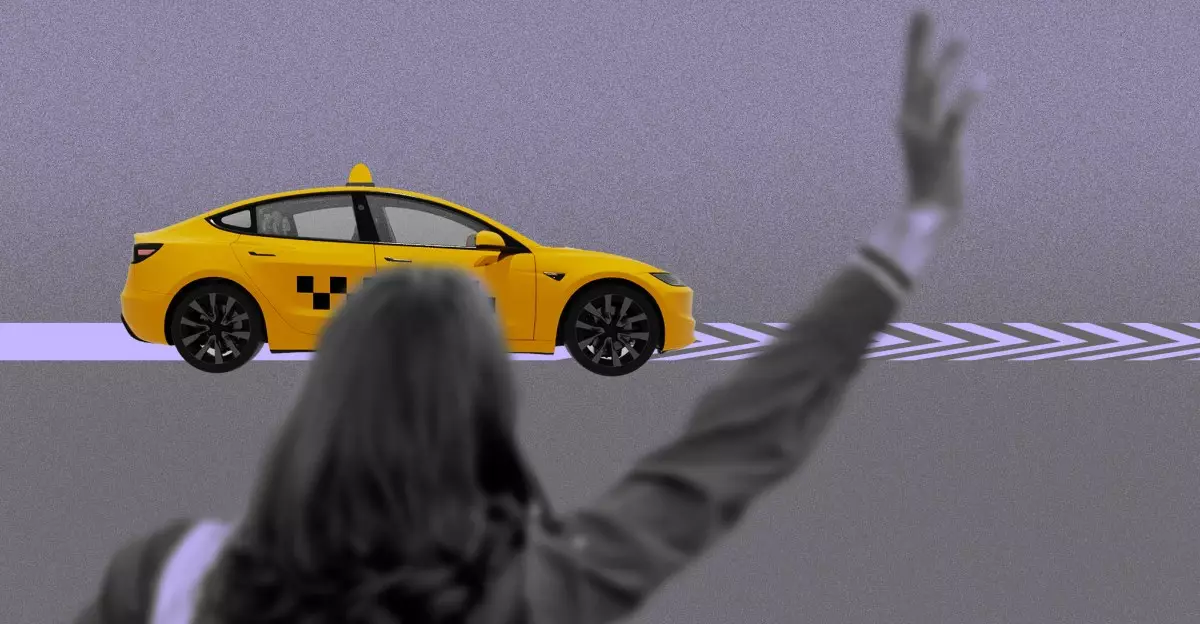Tesla’s robotaxi launch in Austin, Texas, serves as a striking example of how the company has meticulously reshaped its media narrative, privileging loyal influencers while sidelining traditional journalism. Unlike Tesla’s past high-profile product unveilings, which often generated broad media interest with a mix of awe and skepticism, the robotaxi debut was insular by design. Industry journalists who might ask probing or critical questions were physically excluded from the vehicles and socially marginalized online. Instead, a close-knit group of Tesla superfans and influencers orchestrated much of the coverage, bolstering a narrative supportive of Elon Musk’s vision and divesting space from dissenting voices.
This approach is not happenstance; it reflects years of strategic media cultivation by Tesla and Musk himself. Following the dismantling of Tesla’s PR team in 2020 and Elon Musk’s acquisition of Twitter in 2022, the company effectively weaponized its loyal base and social media platforms to skew public discourse. The result? An echo chamber that thrives on opposition to so-called “legacy media,” whose representatives are often met with hostility both online and in person. This environment encourages a strong us-vs-them mentality among Tesla supporters, fostering a tribal loyalty that actively rebuffs journalistic scrutiny.
Echo Chambers: Benefits and Risks in Technological Narrative Control
The self-styled “alternative media” landscape surrounding Tesla’s robotaxi rollout—dominated by influencers with vested interests in the company’s success—has undeniably shifted the traditional dynamics of tech reporting. Figures such as YouTuber Kim Java, boasting hundreds of thousands of subscribers, openly refuse mainstream media engagement to “control their own narrative.” This selective participation grants Tesla a curated media front, one that amplifies positive messaging, downplays technical shortcomings, and marginalizes critical perspectives.
While this strategy has short-term advantages—such as achieving viral enthusiasm and cultivating dedicated brand ambassadors—it comes with significant long-term risks. The robotaxi event resembled a beta test more than an open demonstration, raising concerns about transparency. Critical voices like those of authors Joan Donovan and Ed Niedermeyer have highlighted how such tight media control smacks of “corporate propaganda,” engineered to shore up Tesla’s image amid persistent doubts about its technological claims and safety record.
The strategy of privileging “superfan” influencers works to shield Tesla’s narrative from immediate critical interrogation but also risks alienating a wider audience. By fencing out skeptical journalists and relying heavily on homogenous praise from within an already convinced crowd, Tesla may be mitigating negative press in the near term at the expense of genuine credibility and trust in the public eye.
The Fragile Loyalty of Tesla’s Fanbase
Tesla’s fanbase has long been a potent force, initially driven by excitement about the company’s audacious goals and technological breakthroughs. Early enthusiasm was organic, springing from clean energy advocates, tech enthusiasts, and entrepreneurs who admired Tesla’s willingness to confront entrenched challenges. However, as the company’s highly touted projects like full autonomy have repeatedly fallen short of expectations, some cracks have emerged in fan enthusiasm.
Niedermeyer’s on-the-ground observations—such as the robotaxi braking abruptly when passing a police cruiser, or the gradual erosion of influencer neutrality—hint at a growing tension within Tesla’s loyal ranks. Many supporters remain deeply committed, sometimes motivated by perks such as personalized referral rewards or exclusive event access that reinforce alignment with the company. Yet there are indications that criticism from within is quietly silenced, either through social ostracism or program exclusions.
This guarded and incentivized loyalty is similar to early Apple fan culture but has hardened into a defense mechanism, essential to Tesla’s media posture under Musk’s leadership. For many devotees, defending Tesla isn’t just brand loyalty—it has become a personal project intertwined with identity and investment, financial and psychological alike.
The Limitations of Controlled Messaging in the Face of Broader Realities
Tesla’s polished media bubble works—for now. But the reality of rolling out millions of autonomous vehicles propelled by AI demands greater transparency, accountability, and engagement with skeptical and technically informed audiences. At some point, the company must engage meaningfully with broader, less malleable forms of scrutiny to address crucial questions about safety, regulatory compliance, and operational readiness.
The exclusion of critical journalism and the sidelining of traditional investigative reporters could backfire spectacularly once broader deployment exposes real-world failures or inconsistencies. Influencers who currently amplify Tesla’s messaging operate with a level of knowledge and accountability that is unequal to the risks inherent in self-driving technology deployment. When disruptive incidents inevitably surface, the echo chamber will be tested, and the cost of postponing open discourse may be severe reputational damage.
If Tesla is serious about revolutionizing urban mobility with robotaxis, it cannot indefinitely rely on an insular, superfandom-driven media filter. Bolstering belief through promoting an alternative media narrative is a powerful short-term tool, but it lacks the robustness that independent critique brings to technological innovation. Transparency and dialogue with a broad range of voices remain essential to truly revolutionary product launches—not merely insular hype machines.
The Intersection of Marketing and Reality in Tesla’s Ambitions
Tesla’s ability to churn out headlines and social media buzz is impressive, reflecting a sophisticated understanding of modern digital influence. However, the blending of marketing with supposed technology demonstrations raises crucial questions about how tech companies should engage the public and stakeholders. What happens when product launches appear more like controlled marketing events than honest technology tests? The robotaxi launch reveals the dangers of conflating enthusiasm with evidence and staged narratives with factual performance.
The very phenomenon of a “Greek chorus” of influencers that Niedermeyer describes signifies something that might be more performative than substantive: a chorus whose job is not to question but to praise. Such enthusiasm, however genuine to some individuals, cannot replace rigorous evaluation and transparency. For Tesla to live up to its promises, it must find a way to balance passionate advocacy with openness to critique—a challenge far more difficult than generating viral hype but indispensable for sustainable innovation.

